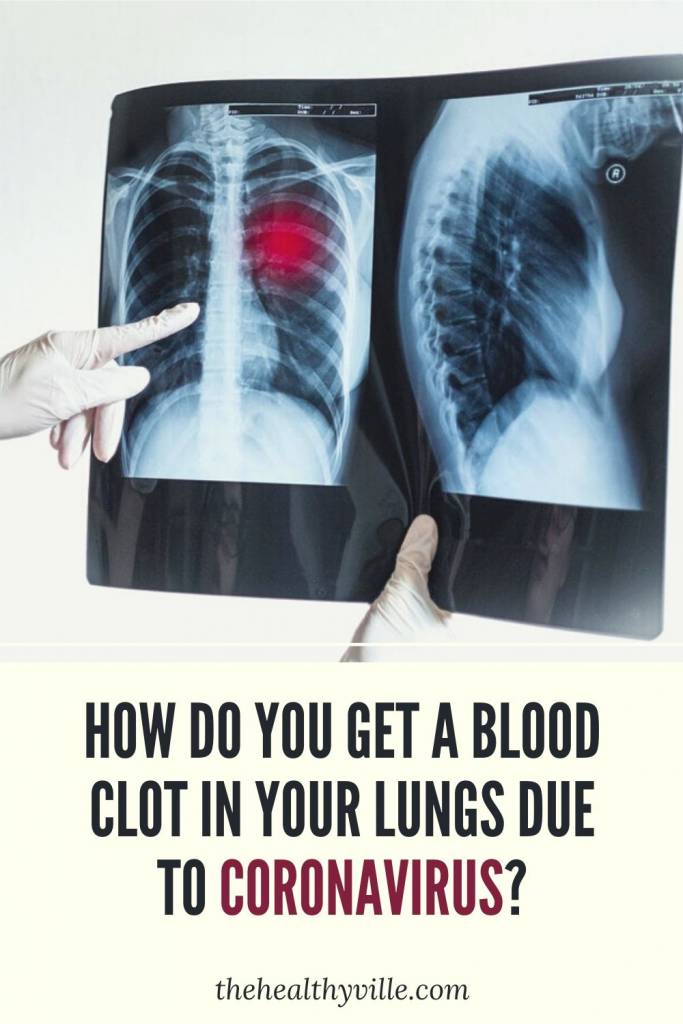How do you get a blood clot in your lungs? How does the coronavirus influence this condition? What can the doctors do in this situation?
The presence of clots in the lungs in patients infected with coronavirus alerted various intensive care services to the risk of death from pulmonary embolism. What do we know so far about this complication?
COVID-19 infection was classified from the outset as a flu-like illness that could be complicated by pneumonia. However, recent findings raised the presence of clots in the lungs of patients with coronavirus who had died.
These autopsies questioned what was considered the regular mechanism of infection progression. It could be that pulmonary embolism ends up being the cause of death in some cases, and not sepsis due to pneumonia.
Although we continue talking about the thoracic area, two different systems intervene depending on whether they are alveoli with pus or blood vessels with clots. In pneumonia we focus on the respiratory system, while pulmonary embolism has a strong component of the circulatory system.
Clots in the lungs are able to obstruct the blood circulation in the lung tissue, preventing the oxygen that comes in by inspiration from passing to the other tissues. In the short term, oxygen-free tissues die.
This led to the development of intensive care protocols for COVID-19 patients, which involve the use of anticoagulants if the patient meets certain criteria. Anticoagulants are drugs that stop the process of thrombus and embolus formation. However, they cannot be used without precautions, since the adverse effect is bleeding.
The discovery of clots in the lungs
A study recently published in the medical journal Radiology looked at radiographs. And, some laboratory parameters of patients with COVID-19 pneumonia. From their findings, the clots in the lungs began to speak more forcefully due to coronaviruses.
The researchers found that more than 20% of those infected with coronaviruses had signs of pulmonary embolism on their chest scans. And the average appearance of said embolism was 12 days after being diagnosed.
If the presence of pulmonary embolism in these patients is compared with respect to others who are not positive for COVID-19, it is evident that the proportion is higher. In critically ill individuals from any cause, up to 1% develop pulmonary embolism, but if we only look at those infected with coronavirus, that value rises to almost 10%.
A substance that is measured in the blood and is indicative of coagulative processes is the D-dimer. This substance was also found higher in patients with SARS-CoV-2 than in the rest of the hospitalized population.
High D-dimer levels correspond to the high incidence of thrombotic incidents. That is, if there is the D-dimer high in the blood, these people are at greater risk of developing clots that lead to a pulmonary embolism.
How do you get a blood clot in your lungs?
As some scientific studies well explain, clots in the lungs of coronavirus patients seem more like a circulatory than a respiratory problem. When there is obstruction in the circulation, the rest of the tissues run out of oxygen.
Some series of patients have had relatively good respiratory evolutions. This means that his breathing mechanics were not altered to such a point that oxygen could not enter the body. The problem was, then, oxygen couldn’t get to the other vital tissues, like the heart and brain.
If oxygen does not circulate, we should speak of hypoxia rather than sepsis. Sepsis is the spread of an infection throughout the rest of the body, starting from a specific point – the lungs, for example. In contrast, hypoxia is the low concentration of available oxygen.
Our cells need oxygen to function. The metabolism and the actions that generate internal energy depend on a good arrival of oxygen. The clearest example may be that of exercise, when the muscles request more oxygen and we accelerate our breathing.
Can doctors detect it in time?
Fortunately, scientific advances serve to improve care protocols. Intensive care units are currently implementing methods to diagnose clotting problems early in patients with coronavirus.
Both exaggerated clotting and bleeding are dangerous. There are management plans for each of these situations. Always considering the adverse effects that exist in each patient, according to their comorbidity and their general clinical condition.
What should I do as a patient?
In itself, this issue of coronavirus clots in the lungs is the sole province of the treating physician. There are no specific symptoms that alert a specific person about this process, since the reasons for consultation remain the same:
- Fever
- Decay
- Cough and shortness of breath
It is a priority to make the consultation when these signs appear. Early detection reduces the risks of progressing to the more serious forms of COVID-19, such as pneumonia and pulmonary embolism.
Don’t forget to SHARE how do you get a blood clot in your lungs with your friends and family on your social networks!

